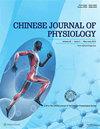Acute Hyperoxia Improves Spinal Cord Oxygenation and Circulatory Function Following Cervical Spinal Cord Injury in Rats
IF 1.4
4区 医学
Q4 PHYSIOLOGY
引用次数: 0
Abstract
Spinal cord injury is associated with spinal vascular disruptions that result in spinal ischemia and tissue hypoxia. This study evaluated the therapeutic efficacy of normobaric hyperoxia on spinal cord oxygenation and circulatory function at the acute stage of cervical spinal cord injury. Adult male Sprague Dawley rats underwent dorsal cervical laminectomy or cervical spinal cord contusion. At 1–2 days after spinal surgery, spinal cord oxygenation was monitored in anesthetized and spontaneously breathing rats through optical recording of oxygen sensor foils placed on the cervical spinal cord and pulse oximetry. The arterial blood pressure, heart rate, blood gases, and peripheral oxyhemoglobin saturation were also measured under hyperoxic (50% O2) and normoxic (21% O2) conditions. The results showed that contused animals had significantly lower spinal cord oxygenation levels than uninjured animals during normoxia. Peripheral oxyhemoglobin saturation, arterial oxygen partial pressure, and mean arterial blood pressure are significantly reduced following cervical spinal cord contusion. Notably, spinal oxygenation of contused rats could be improved to a level comparable to uninjured animals under hyperoxia. Furthermore, acute hyperoxia elevated blood pressure, arterial oxygen partial pressure, and peripheral oxyhemoglobin saturation. These results suggest that normobaric hyperoxia can significantly improve spinal cord oxygenation and circulatory function in the acute phase after cervical spinal cord injury. We propose that adjuvant normobaric hyperoxia combined with other hemodynamic optimization strategies may prevent secondary damage after spinal cord injury and improve functional recovery.急性高氧能改善大鼠颈脊髓损伤后的脊髓氧合和循环功能
脊髓损伤与导致脊髓缺血和组织缺氧的脊髓血管破坏有关。本研究评估了常压高氧对颈脊髓损伤急性期脊髓氧合和循环功能的治疗效果。成年雄性 Sprague Dawley 大鼠接受了背侧颈椎椎板切除术或颈脊髓挫伤。脊髓手术后 1-2 天,通过放置在颈脊髓上的氧传感器箔的光学记录和脉搏血氧仪监测麻醉大鼠和自主呼吸大鼠的脊髓氧合情况。在高氧(50% O2)和常氧(21% O2)条件下,还测量了动脉血压、心率、血气和外周血氧饱和度。结果显示,在常氧条件下,挫伤动物的脊髓氧合水平明显低于未受伤动物。颈脊髓挫伤后,外周氧合血红蛋白饱和度、动脉血氧分压和平均动脉血压都明显降低。值得注意的是,在高氧条件下,挫伤大鼠的脊髓氧合可改善到与未受伤动物相当的水平。此外,急性高氧还会升高血压、动脉氧分压和外周氧合血红蛋白饱和度。这些结果表明,常压高氧能显著改善颈脊髓损伤后急性期的脊髓氧合和循环功能。我们建议,常压高氧与其他血液动力学优化策略相结合,可以防止脊髓损伤后的二次损伤,并改善功能恢复。
本文章由计算机程序翻译,如有差异,请以英文原文为准。
求助全文
约1分钟内获得全文
求助全文
来源期刊
CiteScore
2.30
自引率
5.60%
发文量
36
审稿时长
6-12 weeks
期刊介绍:
Chinese Journal of Physiology is a multidisciplinary open access journal.
Chinese Journal of Physiology (CJP) publishes high quality original research papers in physiology and pathophysiology by authors all over the world. CJP welcomes submitted research papers in all aspects of physiology science in the molecular, cellular, tissue and systemic levels. Multidisciplinary sciences with a focus to understand the role of physiology in health and disease are also encouraged.
Chinese Journal of Physiology accepts fourfold article types: Original Article, Review Article (Mini-Review included), Short Communication, and Editorial. There is no cost for readers to access the full-text contents of publications.

 求助内容:
求助内容: 应助结果提醒方式:
应助结果提醒方式:


